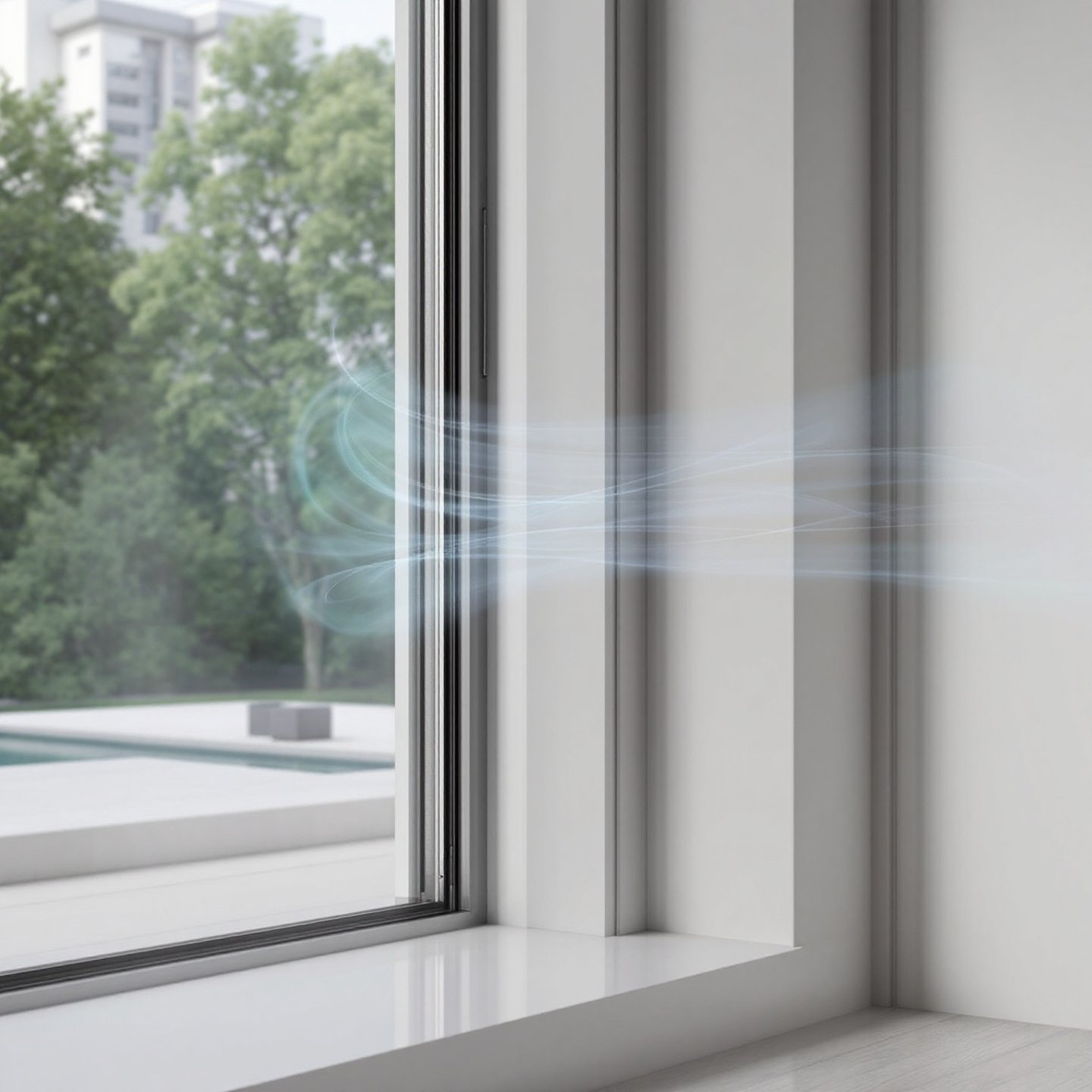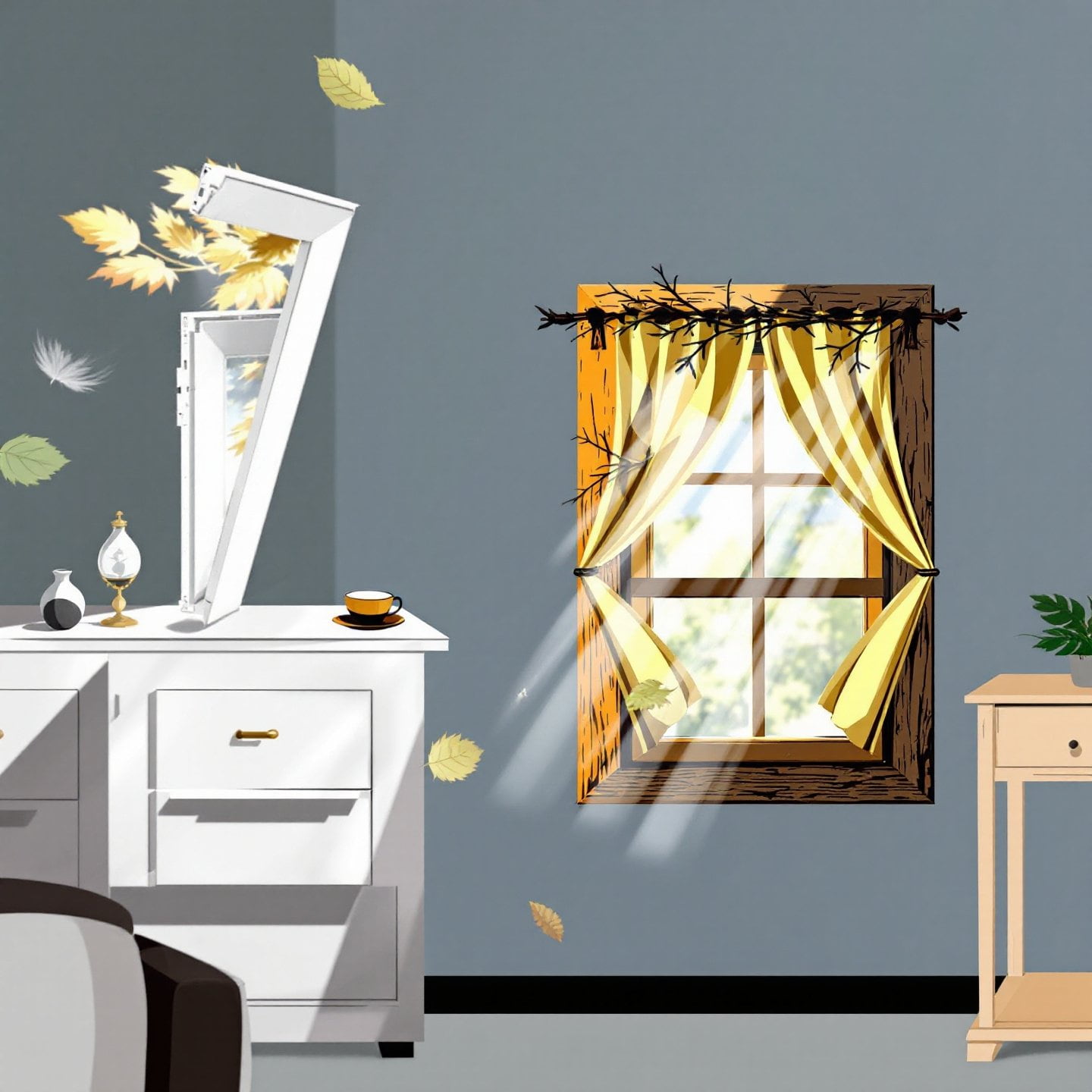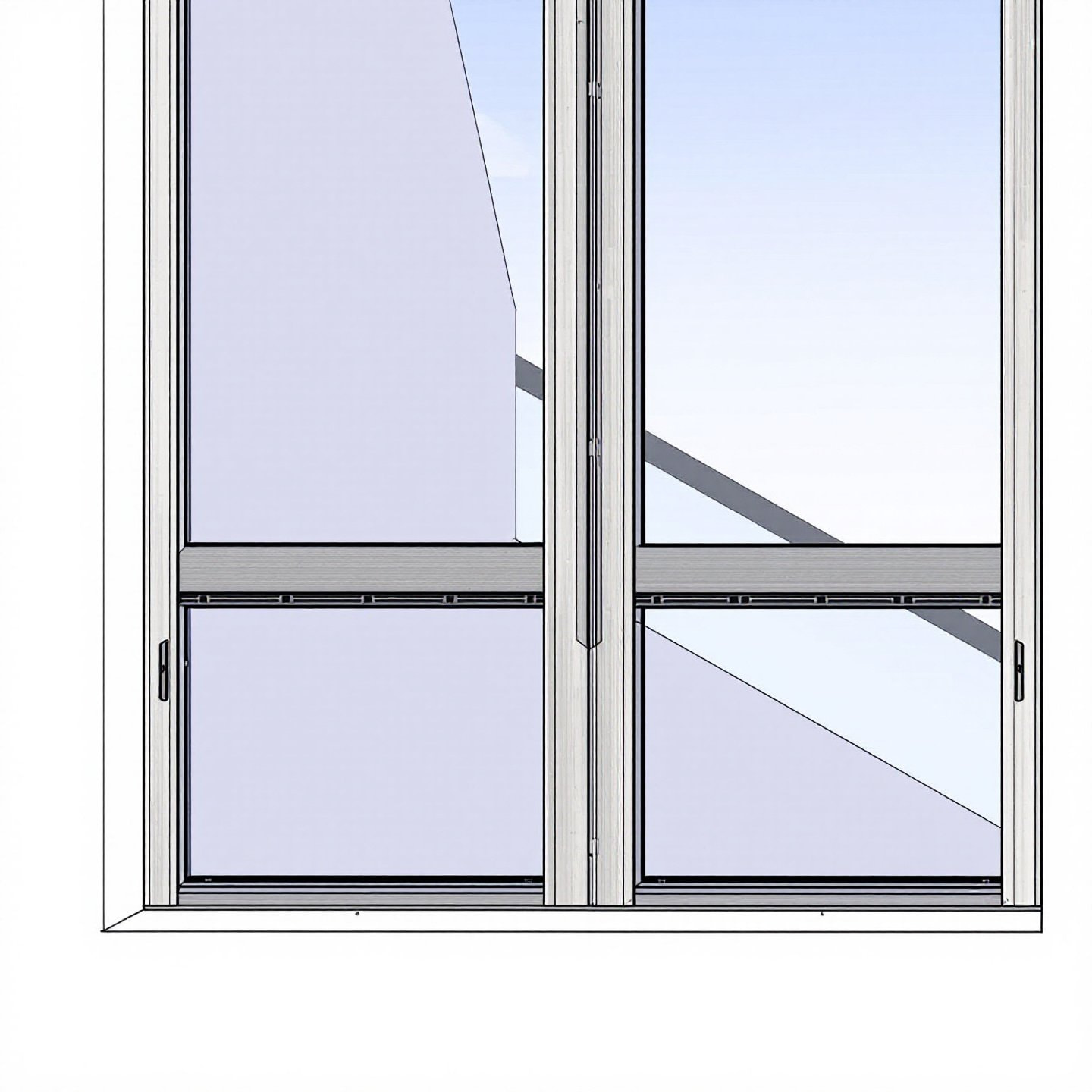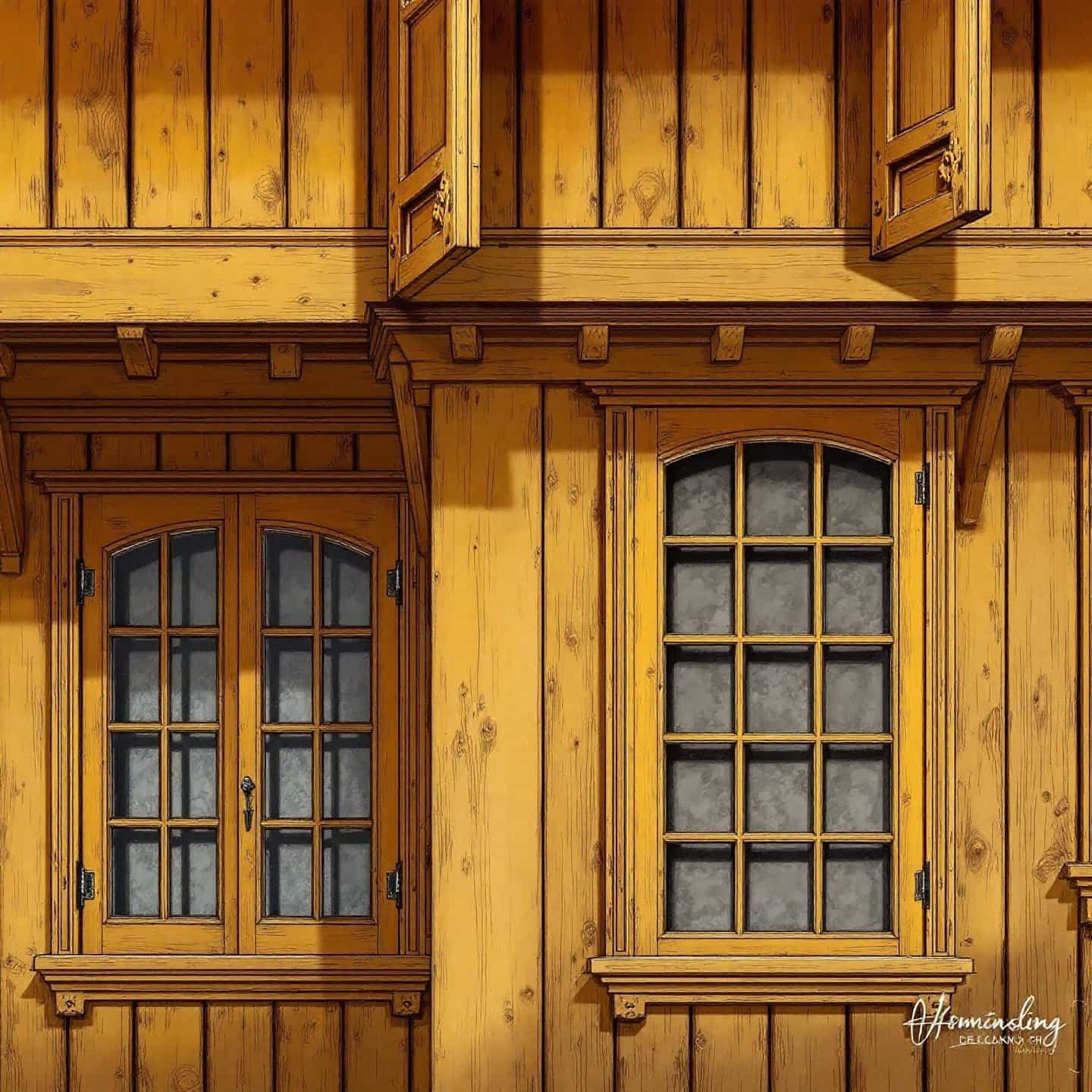Window Trickle Vents: Boost Home Air Quality and Comfort
Jan 07, 2025
In today’s pursuit of more energy-efficient homes, ensuring proper ventilation often becomes a challenge. This is where window trickle vents come into play, offering a simple yet effective solution to maintain a healthy indoor environment. These small, discreet vents are integrated into window frames, allowing a continuous flow of fresh air without the need to open windows, thus enhancing both air quality and comfort within modern homes.
The significance of window trickle vents cannot be overstated. As our homes become more airtight due to improved insulation and sealing, the natural exchange of indoor and outdoor air is significantly reduced. This reduction can lead to increased humidity levels, condensation, and even mold growth, which can pose health risks. By allowing a controlled amount of air to circulate, window trickle vents help mitigate these issues, ensuring that indoor air remains fresh and healthy.
When it comes to high-quality window vents, Sunmay Aluminum stands out as a leading manufacturer. Known for their expertise in crafting premium aluminum profiles, Sunmay Aluminum provides innovative and durable window trickle vents that blend seamlessly with various window designs. Their commitment to quality and adherence to international standards make them a trusted choice for homeowners looking to enhance their living environments.
As we delve deeper into the benefits and applications of window trickle vents, we will explore how these unobtrusive additions can significantly improve indoor air quality and contribute to a more comfortable living space.
Imagine a home where the air feels fresh and clean, even with the windows shut tight. This is the promise of window trickle vents, a feature that has become increasingly popular in modern home design. But what exactly are these vents, and why are they so beneficial?
Window trickle vents are small, engineered openings integrated into window frames. They allow a controlled amount of air to flow into a room, enhancing indoor air quality without compromising security. By permitting a steady exchange of indoor and outdoor air, these vents help in maintaining a healthier environment, particularly in homes that are well-sealed for energy efficiency.
By understanding the role and benefits of window trickle vents, homeowners can make informed decisions about incorporating these features into their living spaces. These vents not only contribute to a healthier environment but also support the energy efficiency goals of modern homes.

When it comes to choosing the right types of trickle vents for your home, understanding the differences in materials, designs, and performance is crucial. Each type of trickle vent offers unique benefits, and selecting the right one can greatly enhance your home's ventilation without compromising on aesthetics or functionality.
Trickle vents are available in a variety of materials, each with its own set of advantages:
Trickle vents come in various designs that affect their performance and suitability for different window types:
| Type | Material | Airflow Rate | Adjustability |
|---|---|---|---|
| Through Frame | Aluminum | High | Moderate |
| Over-Frame | UPVC | Medium | High |
| Glazed-In | Wooden | Low | Low |
Choosing the right trickle vent involves considering the specific needs of your home and the aesthetic you wish to achieve. With a variety of materials and designs available, homeowners can find the perfect solution to enhance indoor air quality and comfort.
Are you looking to enhance your home's ventilation without compromising on its energy efficiency? Installing trickle vents on existing windows might just be the solution you need. These small yet effective additions can significantly improve airflow, reduce condensation, and maintain a comfortable indoor environment. Here’s a detailed guide to help you install trickle vents on your windows, ensuring optimal performance and safety.
Before you begin the window vent installation , it's crucial to gather all necessary tools and materials. You will need:
Planning is key. Determine the ideal location for the vents, typically near the top of the window frame. This positioning ensures maximum airflow without compromising the window's structural integrity.
While installing trickle vents, safety should be a top priority. Wear protective eyewear when drilling and ensure your workspace is clear of obstructions. Double-check all measurements and alignments before drilling to avoid errors that could compromise the window frame.
Proper sealing and insulation are essential for effective performance. Ensure that the vents are tightly secured and that there are no gaps that could allow drafts or moisture ingress. This attention to detail will help maintain the energy efficiency of your home while enjoying improved ventilation.
With these steps, you can successfully retrofit trickle vents to your existing windows, enhancing your home's air quality and comfort. Ready to breathe new life into your living space?
Ensuring the longevity and efficiency of your window trickle vents requires regular attention and care. Proper maintenance not only enhances their performance but also prevents issues like blockages or damage that can compromise indoor air quality. Here are some practical tips to help you maintain these vital components of your home’s ventilation system.
Regular cleaning is crucial to prevent the buildup of dust and debris in your window trickle vents. Over time, these particles can accumulate, reducing airflow and potentially leading to the growth of mold and mildew. To clean your vents effectively:
Regular inspections are essential to identify and address any blockages or damage that could affect the functionality of your vents. Consider the following steps:
Sometimes, despite regular maintenance, vents may become too worn to function effectively. Here’s how you can replace trickle vents when necessary:
By maintaining your window trickle vents, you’ll ensure they continue to provide fresh air and prevent issues like condensation and mold growth. Regular cleaning, inspection, and timely replacement of worn-out components are key to keeping your home’s air quality at its best.

When it comes to optimizing the ventilation of aluminum windows, integrating aluminum window vents is a highly effective strategy. These vents are not only compatible with aluminum frames but also offer numerous benefits that enhance the overall indoor environment. Let's explore how these vents work and the specific advantages they bring to aluminum window systems.
Aluminum trickle vents are designed to complement the sleek and modern aesthetic of aluminum windows, while providing practical advantages:
Installing aluminum trickle vents involves some specific considerations to ensure optimal performance:
For those seeking reliable and high-quality aluminum window vents, Sunmay Aluminum offers a range of products that stand out in terms of performance and design. Their vents are crafted from premium aluminum alloys, ensuring durability and efficiency. With options available to suit various window designs, Sunmay Aluminum's products are designed to meet international standards, providing homeowners with peace of mind and enhanced ventilation solutions.
Integrating aluminum trickle vents into your window systems is a wise choice for enhancing indoor air quality while maintaining energy efficiency. With the right installation and choice of high-quality products, such as those from Sunmay Aluminum, you can enjoy the benefits of improved ventilation without compromising on style or functionality.
When it comes to enhancing the ventilation of your home while maintaining energy efficiency, installing UPVC window vents is a smart choice. UPVC windows are popular for their durability, low maintenance, and excellent insulation properties. However, they can sometimes limit natural airflow, which is where trickle vents come into play. These vents offer a practical solution by allowing fresh air to circulate without compromising the security or energy efficiency of your home.
Integrating trickle vents into UPVC windows provides several advantages:
Installing trickle vents on existing UPVC windows is a straightforward process. Here’s how you can do it:
For those looking for reliable options, Sunmay Aluminum offers a range of UPVC-compatible trickle vents. Known for their high-quality aluminum products, Sunmay Aluminum ensures durability and efficiency, making them a preferred choice for homeowners seeking to enhance their window systems.
By following these steps, you can successfully integrate trickle vents into your UPVC windows, improving ventilation and maintaining a comfortable indoor environment.

Integrating trickle vents into wooden window frames can significantly improve airflow in your home, but it comes with its own set of challenges. Wooden windows, known for their classic aesthetic and natural insulation properties, require careful handling to maintain their integrity while incorporating modern ventilation solutions. Let’s explore how you can effectively add wooden window vents to enhance air circulation.
Wooden window frames present unique challenges compared to UPVC or aluminum counterparts. The natural material can be susceptible to moisture and requires precise workmanship to avoid weakening the structure. Additionally, maintaining the aesthetic appeal of the wood while integrating vents is crucial. The key is to ensure that the installation does not compromise the window’s durability or its visual charm.
Here’s a detailed guide to help you install trickle vents in your wooden windows:
Maintaining your wooden window vents is essential to ensure they function effectively over time. Regularly inspect the vents for any signs of wear or damage. Clean them periodically to prevent dust and debris buildup, which can hinder airflow. If you notice any moisture-related issues, address them promptly to prevent wood deterioration.
By following these steps and maintaining your wooden window vents, you can enjoy improved airflow and a healthier indoor environment. The integration of trickle vents not only enhances ventilation but also preserves the timeless beauty of wooden windows.
When considering the installation of window trickle vents, understanding the relevant building regulations is crucial. These regulations ensure that the installation of such vents not only improves ventilation but also complies with safety and performance standards. Let's delve into the key regulatory aspects that homeowners and installers must consider.
Building codes across various regions stipulate specific requirements for ventilation systems, including window trickle vents. The primary aim is to ensure that these systems provide adequate airflow without compromising the structural integrity or energy efficiency of the building. Key considerations include:
To ensure vent compliance with these regulations, it is essential to choose products that are manufactured to meet or exceed the required standards. This is where reputable manufacturers like Sunmay Aluminum come into play. Known for their adherence to international standards such as GB5237 and EN12020, Sunmay Aluminum's products are designed to meet the rigorous demands of modern building codes.
Sunmay Aluminum's commitment to quality and compliance is evident in their extensive range of high-performance aluminum vents. These products not only enhance ventilation but also contribute to the overall energy efficiency and safety of the building. By choosing vents from a trusted manufacturer, homeowners can ensure that their installations meet all necessary regulations, providing peace of mind and long-term reliability.
Understanding and adhering to building regulations for window trickle vents is essential for both safety and performance. By selecting high-quality products like those from Sunmay Aluminum, you can ensure compliance and enjoy the benefits of improved ventilation and air quality.
Throughout this exploration of window trickle vents , it's clear how these small yet powerful components can significantly impact your home's air quality and energy efficiency. By allowing a continuous flow of fresh air, they help mitigate common issues such as condensation and mold growth, ensuring a healthier living environment. Moreover, their ability to enhance ventilation without compromising insulation makes them an essential feature for modern homes aiming to be both comfortable and energy-efficient.
For homeowners seeking energy efficient vents that seamlessly blend with their window designs, choosing high-quality options is crucial. Sunmay Aluminum stands out as a leading manufacturer, offering premium aluminum window vents that meet international standards. Their products are not only designed to improve ventilation but also to enhance the aesthetic appeal and durability of your windows. By integrating these high-quality window vents, you can achieve optimal performance while maintaining the visual integrity of your home.
We invite you to explore the range of offerings from Sunmay Aluminum to find the perfect solution for your ventilation needs. Their commitment to quality and customer satisfaction ensures that you receive products that not only meet but exceed your expectations. Visit their website today to learn more about how their innovative window trickle vents can transform your living space, offering both comfort and efficiency.
Yes, trickle vents are beneficial as they provide consistent background ventilation, improving air quality and reducing condensation without compromising security.
Absolutely, trickle vents can be retrofitted to existing windows. This is particularly useful for improving ventilation in homes with condensation issues.
It's recommended to keep trickle vents open to allow continuous airflow, ensuring fresh air circulation while maintaining indoor air quality.
Trickle vents are designed to minimize heat loss while providing necessary ventilation, making them efficient for maintaining a comfortable indoor environment.
Trickle vents are commonly made from aluminum, UPVC, and wood, each offering unique benefits in terms of durability, aesthetics, and insulation.
Whatsapp : +8617366266559
Email : sales@sunmayalu.com
Tel : +86 -17366266559
Hi! Click one of our members below to chat on